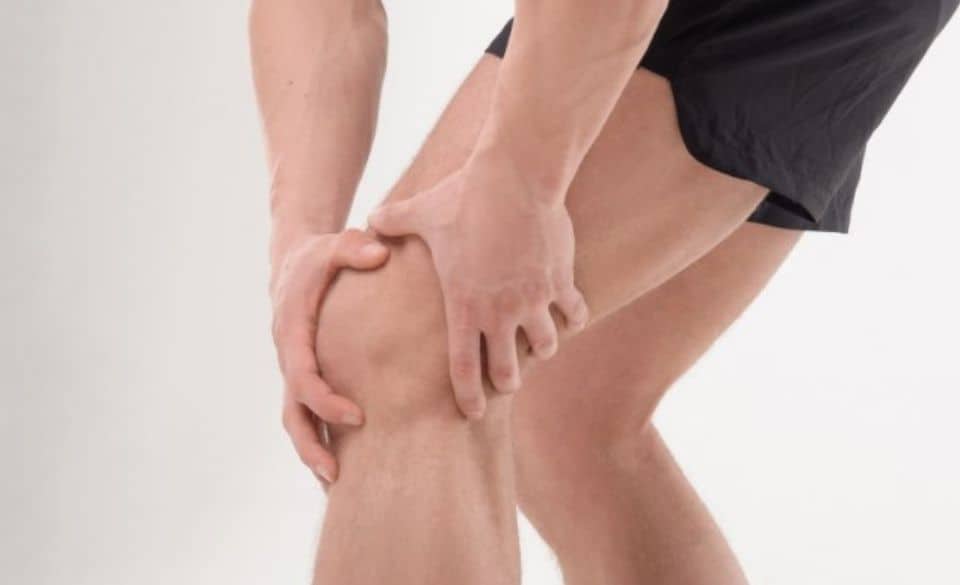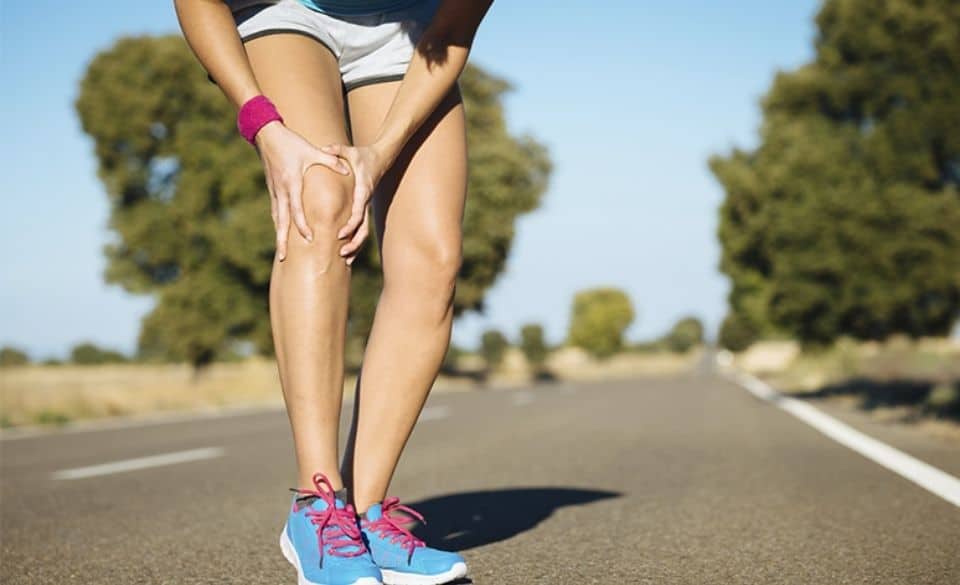
Knee Pain When Running Downhill? Dealing With IT Band Syndrome
Page Contents
Knee pain can often cause excruciating pain, especially when running downhill. So what causes knee pain when running downhill?
In this article, we look at what causes outside knee pain and IT Band Syndrome. As well as exercises that can help prevent ongoing IT band issues.
Knee Pain When Running Downhill? Here’s What It Could Mean
Knee pain when running downhill is a common occurrence within runners. Often this is caused by stress placed on the joints and muscles while running downhill. You see, as you run downhill, the quadriceps control the breaking and acceleration, which ultimately guides the tracking of the knee. Unfortunately, if the quadriceps or muscles surrounding the knee are weak, you may find you start to experience some pain.
However, if you experience knee pain, it may not only be the impact causing the problem. So let us look at the main factors that can cause knee pain while running.
Weak muscles. To help the kneecap track correctly it is important to have strong supportive muscles surrounding the knee. Having weak or underdeveloped muscles will cause twisting or a pulling motion to the knee cap when you run. This will cause incorrect tracking of the knee, which can then cause pain when running downhill.
If you experience this issue, start adding some gym-based strength training to your program. Doing so can help strengthen the surrounding muscles.
Exercises such as leg squats can help you strengthen muscles around the knee and help you analyse how the knee tracks under load.
Foot Landing and mechanics. Foot strike and biomechanics can cause additional stress to the knee during both flat and downhill running.
Knowing this, it is wise to see a podiatrist or gait analysis expert to look over your running style. Doing so will ultimately find the cause of the problem and prescribe a much-needed solution. If you don’t have access to a gait analysis expert, take a trip to your local running shop and get a basic gait analysis done instead.
Lack of conditioning. If you’re new to running, you won’t have the volume of running behind you. That means some of the pain you experience in the knee might be from the adaption process. If this is the case, make sure you aren’t increasing the volume too quickly. Instead, start by increasing the mileage gradually and slowly increase your limits. Alternatively, when it comes to downhill running, try to incorporate smaller downhill segments in the beginning and slowly increase the length over time.
Following this protocol will slowly increase the load placed on the knee, strengthening it over time so you can handle more.
Tight muscles. As a runner, it is common to experience tight muscles. The hamstring and quadriceps muscles, when tight, can also cause pain in and around the knee, resulting in pressure over the patella (kneecap).
Knowing the tightness of muscles can cause undue pain and discomfort. It is important to include regular massages and foam rolling workouts in your training. Doing so will help keep the muscles supple and help prevent the patella from rubbing on the joint beneath it. Start by focusing on the quadriceps, hamstrings, and IT Bands first.

Outside Knee Pain When Running Downhill
While regular hill running is great for the runner’s fitness, it can often cause inflammation to the ITB. If you are experiencing outside knee pain when running downhill you may have symptoms of Iliotibial band syndrome. This injury is also commonly known as IT band syndrome, ITB syndrome, or ITBS.
Iliotibial band syndrome, unfortunately, is one of the most common overuse injuries runners experience. It usually occurs when the iliotibial band gets tight or inflamed from overuse or extended periods of running downhill.
If you find you have outside knee pain when running downhill it is important to rest and see a physiotherapist or masseuse that can help loosen up the surrounding tissue.
However, the discomfort you feel is coming from the iliotibial band. The iliotibial band is a thick band of connective tissue that travels from the hip down to the outside of the knee. And once this gets tight or inflamed, it will start to cause pain around the outside of the knee.

Pain In Side of Knee When Walking Downhill
Unfortunately, it’s not just runners that experience pain in the knees when going downhill. Walking is another form of exercise that can cause pain in the side of the knee when walking downhill.
Even though walking downhill may be a breeze, it still adds stress to your joints and muscles. So it’s not uncommon to experience mild symptoms of knee pain while walking.
If you experience pain in the side of the knee (lateral or medial) when walking downhill, you first need to check the cause of this.
A large portion of the medial knee injuries (the side closest to the other knee) comes from:
– Iliotibial band syndrome
– MCL injuries
– Arthritis
While the lateral side of the knee often comes from:
– Medial meniscus tears
– Lateral meniscus tears
– LCL injuries
– IT band tendonitis
– Arthritis
While most of these are mild to extreme injuries, you may just be experiencing overuse symptoms from walking too much.
Just like running, walking downhill places a lot of stress on the quadricep muscles and joints, so doing too much of this may result in inflammation or tight muscles.
However, unstable footwear and poor supporting muscles can be another cause of discomfort. So make sure you have the correct footwear and think about strengthening the muscles around the knee and quadriceps.
When you experience pain in the knee, you may also have inflammation, which can cause pain when walking downhill. Either way, take some time off from walking and use ice to relieve any inflammation. Then, just like running, either use massage or foam rolling to relieve any tight IT Bands you may have.
If you experience more extreme symptoms and the pain is just not limited to walking downhill, it is wise to see a physiotherapist who will help treat and diagnose the problem. important
IT Band Strengthening Exercises
As a runner, strength training is just as essential as aerobic training. Regular strength training can help prevent injuries and keep the body functioning as it should.
If you have symptoms of Iliotibial band syndrome, there are a few ways you can treat and prevent this. One way is by including some IT band strengthening exercises into your training routine. However, if you don’t experience any issues, the below exercises can still help to prevent any injuries in the future.
Most of these exercises are focusing on area’s that support the IT bands, thus preventing excess overuse of the muscle.
Hip Bridge
The hip bridge is an effective exercise to help strengthen the IT bands. This exercise helps increase gluteus maximus EMG activity and prevent pelvic tilt during running.
To perform this exercise:
1. Start by lying on the floor
2. Place a resistance band around the quadriceps, above the knees.
3. Slightly abduct legs while simultaneously lifting the pelvis towards the roof.
4. Lower the hips slowly to the ground
5. Repeat 10 times and build up to 3 sets.
Side Hip Abduction
The side hip abduction is a great way to activate the glutes, removing excess stress from the IT bands.
To perform this exercise:
Start by lying on your side on the floor. Make sure your top leg is in a straight line.
1. Focus on activating the core muscles.
2. Slowly lift the top leg towards the roof.
3. Slowly return to the beginning position.
4. Repeat 10 times and build up to 3 sets.
Standing IT Band Stretch
While not so much an exercise. The standing IT band stretch can help increase the length of the IT band by 11%. Performing this stretch often can help reduce discomfort and tightness around the IT band.
To perform this exercise:
1. Start by standing upright and straight.
2. Cross one leg over the other.
3. Lift your arms above your head to gain more leverage.
4. Slowly lean to the side until you feel the IT bands stretch.
5. Repeat 3-5 times daily.
How To Get Rid of IT Band Syndrome?
If you want to know how to get rid of IT band syndrome. There are some basic recovery protocols you should follow. These include stretching, icing, massage, and strengthening.
1. Start by icing and taking some oral anti-inflammatory to help relieve any pain you experience.
2. Stretch the ITB band either following the standing IT band stretch method or by lying on your back and bringing one of your knees towards your shoulder. Then rotate your knee over to the opposite shoulder using your opposite hand. Hold this position for 20 seconds and repeat 3-5 times. Repeat on the other leg the same amount of times.
3. Purchase a foam roller or book in with a masseuse. Spend 30-60 minutes massaging the IT bands, glutes, quadriceps, and hamstrings. During this period continue to stretch to allow the IT to regain full length again.
4. Start to strengthen the surrounding muscles by following the IT band exercises in the article or other exercises you know or have been prescribed.
5. Slowly start to run again once you feel the tissue and muscles are supple and you don’t experience any pain along the IT.


Download Running the Mile for only 8usd
“A Know-all Short Report All About Long Distance Running”



